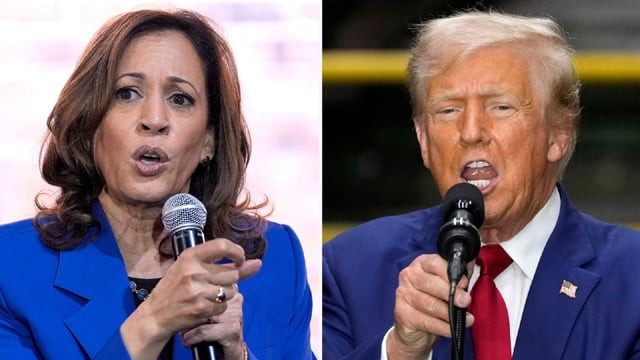Still about money and power

- Update Time : Thursday, July 28, 2022
- 86 Time View

The gallery has now become a place for play, chat, sometimes for laughter and above all for self-display and posting on social media platforms. The development has deep cultural consequences as the art world expands, changes and blurs into luxury goods and high fashion, the mass media, celebrity culture and social media, writes Julian Stallabrass
IT SEEMS a simple enough question: who is contemporary art for?
In a crowded, lively exhibition, one might get the impression that it is for everyone, pretty much. The viewers are more likely to be young, or at least seem young, than old, a bit more likely to be female than male, more stylish than not.
The answer is more complicated than that, however. It’s not just the masses of viewers who have a stake in contemporary art: its buyers, its curators, galleries and museums, and other artists all have their own. Whose really matters?
To complicate things still further, the art world is not a unitary block but a series of divergent though intersecting circles. The circle of the international biennial — its two biggest events are currently running: the Venice Biennale and the documenta in Kassel — is quite different from that of the art fair, the auction house, the national museum, the private museum, which sometimes now upstages its state rivals, or the research- and performance-oriented art scene of the universities. Each operates under different economies, attracts different audiences and shows different artists.
Those audiences have changed strikingly. Long gone are the days when to stage an exhibition of contemporary art was always to lose money because attendance would be slight. The money would be made up with a popular show of, say, the post-Impressionists.
Long gone, too, the staid and hushed decorum of museum and gallery sparsely inhabited by a cultural elite who because of their educational attainments were the only ones who knew how to look, what to say and how to behave. Pierre Bourdieu and Alain Darbel, in a famous sociological study of the 1960s, The Love of Art, gave a compelling image of that apparently solid and unchanging world. It was, they wrote, no less than an exclusive and secular religion where the ideal of the free and innocent eye met the tightly bound knot of class, ethics, aesthetics and deportment.
That world’s passing should hardly be mourned. It is a democratic advance that many more people go to museums and galleries to see art — to see, indeed, the work and the spaces that their taxes do a little to subsidise.
A double movement has made contemporary art much more popular than it was: more people go through higher education, acquiring the mindsets that are prepared to find pleasure in the puzzles that artists tend to throw before their viewers; and much art has become a lot friendlier and more accessible.
The engagement of these viewers — if that is quite the word for them now — is very different from the quiet Kantian detachment and nodding appreciation of the bourgeoisie in aesthetic contemplation. The gallery has now become a place for play, for chat, sometimes for laughter and above all for self-display and posting on social media platforms.
The old prohibition on photography is now near-impossible to enforce, and most institutions want the free advertising that comes with people’s self-advertisement. Artists play to this scenario, more or less subtly. If the veteran avant-gardist Yayoi Kusama has become such a widely popular contemporary art star, it is not only due to her extraordinary biography, as ripe for mythifying as that of Vincent Van Gogh, but to her use of mirrors, so suited for the selfie. Her ‘Infinity Mirror Rooms’, currently on show at Tate Modern in London, have been booked out for months.
Decolonising some art
OTHER motives are at work, however, in art circles that the Tate Modern visitor is unlikely to know. One of the strongest contrasts between such circles is that between the art fair and the biennial. So, for instance, the baby steps that the art world has been making to diversify itself, and to register the continuing sway that colonial history has over wealth, power and ways of thinking, are everywhere emerging but are seen most prominently in the biennial world. But in the art fairs a very different picture emerges.
At the current Venice Biennale, for the first time, women artists far outweigh men on display in the main exhibition, and Sonia Boyce, a pioneer of the British Black art scene since the 1980s, won the most prestigious award there, the Golden Lion, for her display at the British Pavilion. In Kassel, the Jakarta-based curatorial collective ruangrupa, using a radical dialogical and distributive model which involves many other collectives and artists’ groups, exhibits a huge number of artists from the global south. Its decolonising agenda, which included support for Palestine, has collided with a toxic dispute about some exhibiting artists’ support for the ‘Boycott, Divestment, Sanctions’ campaign against Israel. A scandal over anti-Semitism also blew up around an artwork — now removed — that featured an agent of Israel’s secret service with the head of a pig and an Orthodox Jew wearing SS insignia.
The audiences for biennials are highly various, from the art-world elite that arrive on flocks of private jets for the Venice openings to the mix of tourists, lesser art-world folk, students and locals who visit at other times.
At the art fair, however, the all-too-familiar consequences of a supposed meritocracy married to a fearsomely steep hierarchy impose themselves. The artists who sit at the top of the charts for the most expensive works sold at auction or the greatest annual turnover are a good deal less diverse than those seen in biennials. Among the staples in recent years are Jean-Michel Basquiat, Jeff Koons, Damien Hirst, Christopher Wool, Zeng Fanzhi and Richard Prince. They are very predominantly male, often white, mostly come from Western Europe, North America or East Asia, are not young, and often make their work out of a carefully constructed branded persona.
Investor art
THE artists of these commercial heights are presented in much art writing as highly distinct and exceptional individuals, bravely carving their creative paths through the thickets of global culture. Yet a tour around an art fair, an auction sale or a private gallery often produces a cloying sense of déjà vu. This is partly due to a deep shift in the status of the art commodity as the market has modernised and financialised itself, and as more collectors buy only to make a profit.
Among the most expensive and, you would think exclusive, works for purchase are Jeff Koons’s balloon dogs. But there are so many of them. At the very top of the market, there are five monumental balloon dogs of different colours, each worth tens of millions of dollars, and bought by some of the world’s wealthiest collectors including Steve Cohen, Eli Broad, Dakis Joannou and François Pinault.
Should your budget not quite run to that, there are smaller-scale but much larger editions, found in the hundreds for a layout of around $30,000 or the thousands for about $9,000. The general tactic of the branded mega-artists is to cover a very wide spectrum of markets, from the buyers who own a private museum to those who will buy an unlimited poster edition.
This production in series is closely linked to investment and to the financial modelling of art prices: a would-be investor can be given an illusion of assured value if a similar piece was sold recently at a certain price, so works in series become prized. The unique work still has a place in the peculiar economy of the art world, naturally, but its value is unpredictable. Even apparently unique paintings by a particular artist can be effectively part of a branded series, sold on the performance of pieces of similar size and character. This explains much of the appeal of Damien Hirst’s spot paintings — and there are thousands of those.
The masters
AS COLLECTORS get into the habit of conventional and instrumental buying, they usually assure anyone who asks that they buy only for love of the work and never think of selling. And the meeting of exceptional artist and exceptional collector is often presented as a unique moment of symbiosis.
At the time of the 2017 Venice Biennale, Hirst staged a gigantic and bombastic display of objects made in variants and series, ‘Treasures from the Wreck of the Unbelievable’, across two prominent sites owned by Pinault. The exhibition purported to be the salvage from a shipwreck, the collection of a legendary mogul of the ancient world known for his boundless greed, voracity and taste for domination.
Pinault himself lays out the meeting of artist and collector in the catalogue, claiming that ‘Treasures’ is a complete break with Hirst’s previous work because of its excess, ambition and audacity. The works ‘emanate a sense of almost mythological power’ while the artist shows ‘boundless energy and striking presence of mind’ in taking dizzying risks, so making works that embrace ‘grace and violence in the same spirit’. The protean, ungraspable, domineering artist is at one with his collector.
One could hardly have a more open declaration — in the work itself and in its supporting text — of the antagonism of the super-rich to ordinary mortals, the hubristic avowal of their Olympian status, and their right to exploit and wreck the planet.
Taste for accounting
YET this ethos of extreme individualism collides with an economy of standardisation in which many very rich but time-poor collectors follow the uniform advice of art advisors, wealth managers and interior decorators. The result is a proud display of the audacity to act conventionally.
What is more, as the most successful commercial artists operate across a broad spectrum of markets, a certain simplicity of approach and populism of style is seen. This produces a strange alignment of elite and popular taste, not just for Koons, Hirst, Tracey Emin or Takashi Murakami but for the many street artists who have moved into the contemporary art world.
It is strange that the same Banksy image can be found in poster form on the bedroom of many an adolescent and in signed print form in some of the most prestigious private collections. This is especially so because the difference in print quality is pretty small: it is the signature above all that confers value. By the standards of even 15 years ago, such work offers strikingly little conceptual or stylistic complexity.
This break with the sophisticated pleasures offered by complex artistic labour are partly explained by the financialisation of the art world and the stowing of vast quantities of work in specialist storage facilities in freeports: you don’t have to see the work that you own, and it can be quietly traded without moving location beyond the purview of any tax authorities. Even so, the development has deep cultural consequences as the art world expands, changes and blurs into luxury goods and high fashion, the mass media, celebrity culture and social media.
Money warps
AS IN so many realms of life, the dominance of the super-rich, the massive gravitational force of their spending, bends the light around it into new patterns. No area of the contemporary art world is immune: not the biennials, which depend on the subsidy of wealthy galleries and patrons who know that showing there will raise prices; not the museums, which are so far outbid by the extravagant growth in asset values that they are reduced from buying works to ‘collecting collectors’ in the hope of loans, gifts or bequests. Their boards are stuffed with the super-rich, since their main purpose is to raise money, and with wealthy collectors who are being cultivated for their largesse.
The result is a tide of conservatism and standardisation that further reinforces the power of this oligarchic culture. Few artists gain shows in major museums without being represented by the largest private galleries. Their dominance is striking: a 2015 Art Newspaper analysis by Julia Halperin found that about a third of solo exhibitions and retrospectives at US museums featured artists represented by the five top galleries: Gagosian, Pace, David Zwirner, Marian Goodman and Hauser & Wirth. The figures were even starker in the high-end museums: at the New York Guggenheim, 11 out of 12 solo shows came from those galleries; for the city’s Museum of Modern Art, it was nearly half.
Art for the people?
WHAT then explains the impression with which we started, of a popular and open art world? There is a dialectical play of illusion and reality here: first, the globalisation of the art world, and then online culture and social media really have helped to open the cultural scene to a much richer diversity of voices. Increasingly, cultural elites frame what is popular rather than make it.
The resulting alignment of elite and popular tastes is a strange historical anomaly: the elites of the past often assumed that they alone were the repository of civic and aesthetic virtues, and made a point of shunning and despising the tastes of the masses. They did all that they could to distinguish their culture from that which lurked below in ‘the mob’ or the ‘vulgar herd’. As we have seen, however, the apparent modesty shown in the populist taste of the contemporary elites is only skin-deep.
Yet just because such work has wide appeal, not everyone sees the same thing: the kid who has a Banksy poster on their bedroom wall may well take the artist’s socialist politics more seriously than the rich collector who displays it as both a marker of his, and it is almost always his, engagement with contemporary culture, and as an ironic trophy snatched from bohemia.
This range of interpretation raises another social issue: class. Little was heard of this until recently in the art world, long a reliable repository of what the philosopher and political scientist Nancy Fraser calls ‘progressive neoliberalism’. Here all is fine, no matter how unequal the outcomes, as long as no barrier impedes elites on the grounds of gender, sexuality or race.
Bourdieu’s art world evaporated along with the class that sustained it, and we are left with the curious situation in which, as Franco Moretti put it in his book The Bourgeois, ‘Capitalism is more powerful than ever, but its human embodiment seems to have vanished.’ This is so in terms of bourgeois culture, deportment and mores; and increasingly so in terms of wealth, as the middle range is eroded by the torrent of wealth that unceasingly flows upwards.
Class consciousness, despised and continually battered through the long neoliberal decades, exists most strongly among the most precarious and the most elite, and little in between. The hyper-individualism of the commercial art world is a sign of the continuing sway of the underlying ideology of lean-in, incessant work, ‘wanting it’ enough and becoming yourself, through self-branding, despite all the evidence of social rigidity and poor life chances for those not born into privilege. So, in its widespread popularity, contemporary art is a display of those pervasive attitudes, at the same time an asset class of the super-rich and their propaganda arm.
It hardly needs saying that the instability of the wider system is ever more apparent, and has been to many art-world activists since the days of Occupy: of an economic system based on consumerism in which increasingly consumers cannot afford to consume; of the heights reached in the value of all classes of asset, including contemporary art, because of the deep crisis in productive investment.
Furthermore, the violent despoliation of the environment is dramatically written in the trivial character of much art shown in the global event-driven art world, which is a flagrant example of burning carbon as a form of social distinction — for instance, by constantly flying works, couriers, gallerists, collectors, critics and support staff to the latest spectacle. Many artists do speak to the crisis of capitalism, to poverty and exploitation, and especially to environmental destruction. Dissident performances are staged in museums that take oil company money and forced an end to Tate’s long and odious association with BP. These artists really might speak to everyone, pretty much, but if their voices seem faint it is because they are rarely amplified by the megaphones of the elite.
OpenDemocracy.net, July 24. Julian Stallabrass is a lecturer, writer, photographer and curator with particular interest in the relations between art and political issues.




























